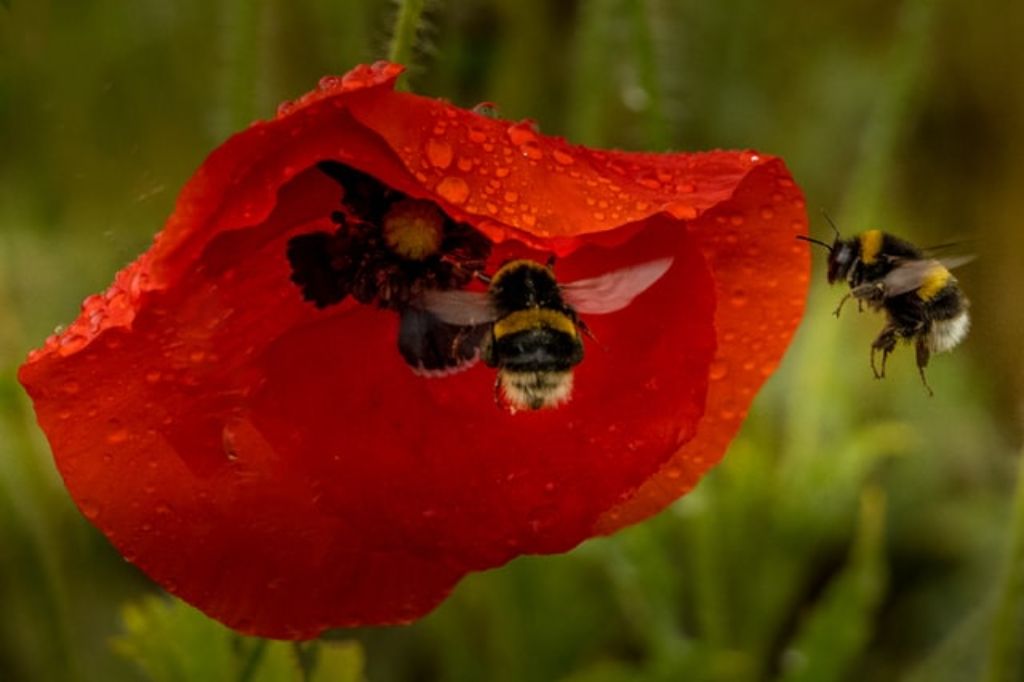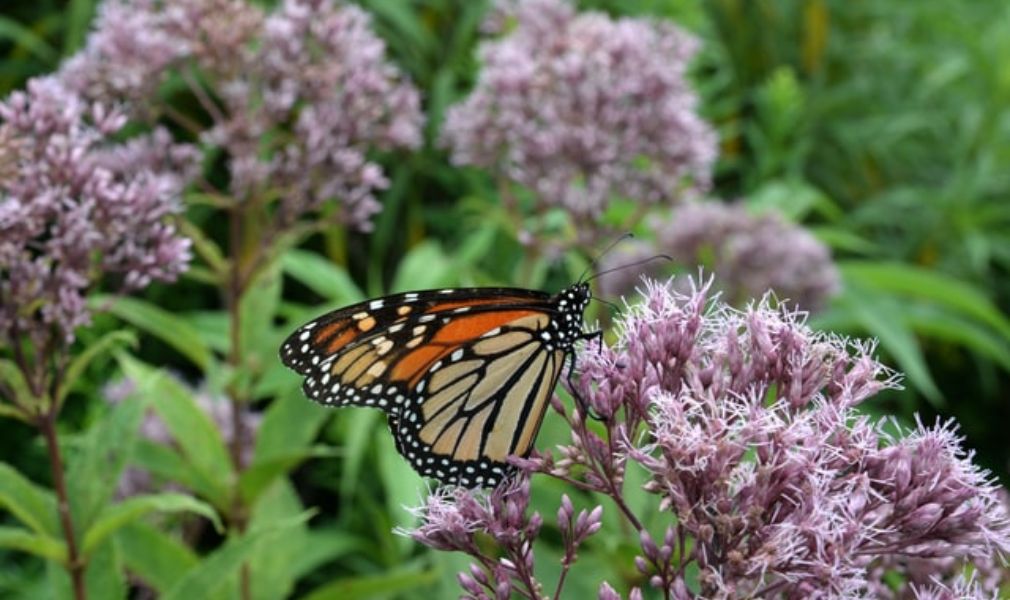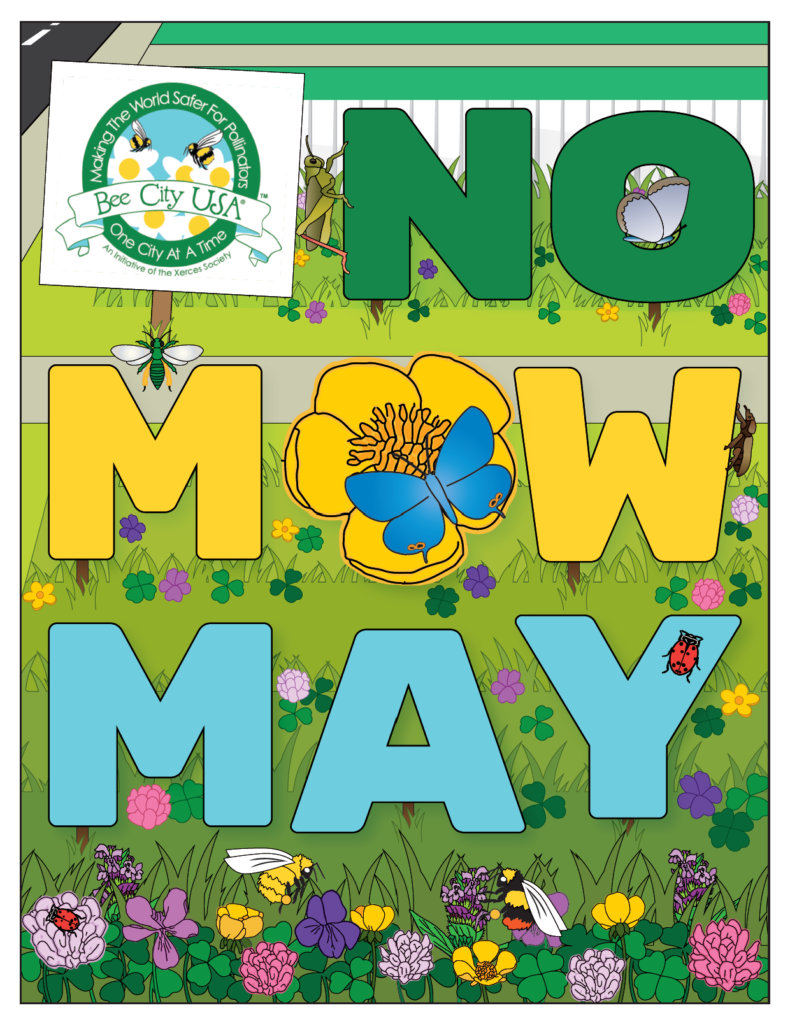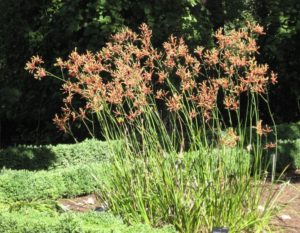
The “No Mow May” movement started in 2020, when a group of citizens in Appleton, Wisconsin, an affiliate of Bee City USA, united to protect bees and other pollinating insects by just letting their grass grow from May 1 – May 31. As they learned from Plantlife, a UK-based non-profit that came up with the idea originally, pollinators get a lot of food and nourishment from grass, weeds and other lawn plants when they flower in the spring. Cutting them too early, before the insects have a chance to feed on them, directly impacts whether they survive and thrive—or die.
To prove the point, researchers at Wisconsin’s Lawrence University, an affiliate of Bee Campus USA, partnered with Appleton to see how not mowing for just the month of May could make a difference. Scientists compared mowed and unmowed lawns and found a significant difference. Yards participating in No Mow May had five times more bees than nearby park lawns that had been mowed.
Not mowing for the month offered plenty of other benefits, too. It delayed the use of noisy gas-powered lawn mowers, leaf blowers, and weed whackers, all of which can be a significant source of air pollution. It reduced applications of pesticides and fertilizers, which in themselves threaten bee and butterfly populations, not to mention the impact those chemicals can have on kids who play on lawns. It saved money on lawn care. It gave people time to work on other landscaping projects, like turning their yards into native habitats that offer benefits all year long. And, it educated people about the importance of protecting pollinators, a “keystone species” that are responsible for approximately one third of the foods we consume.
THE “NO MOW MAY” MOVEMENT IS GROWING!
In 2020, 435 people participated in Appleton’s program. This year, No Mow May is being observed in dozens of cities around the U.S., from Ann Arbor, Michigan to Bangor, Maine to Greenbelt, Maryland. Even lawn care companies endorse it!
“Taking a break from mowing your lawn can be great for the environment and for your wallet,” encourages one. “While saving money on mowing you’ll provide bees with extra plant life, in the form of tall grass and wild dandelions, violets, and clovers. Mowing and herbicides prevent the growth of these native yard species. Despite the appeal of a fresh green lawn, this can be a major problem for native bees, as bees rely on biodiversity for habitat and food sources…Letting more native species grow in your yard is the perfect start to a bigger project that will keep pollinators coming back year-round.”
Don’t Miss: 8 Best Natural Alternatives to Growing Grass
Even if you live in a condo or an apartment, and have no lawn of your own, you can encourage your community to let the grass grow in May. Portland, Maine, for example, has over 30 acres of “no mow” park space that they only mow once a year, in November.
Want to Start Your Own No Mow May Movement? Here’s How.
Check in with your local government to see what property ordinances govern how lawns are maintained. Resolutions passed in Ann Arbor and New Paltz, in New York’s Hudson Valley, could provide a model for one your own community could adopt.
Invite neighbors and your local garden club, garden center, and environmental groups to join you and help you spread the word.
Put up a yard sign. Download one free from Bee City USA, or make your own.
Bee City USA suggests keeping a mowed buffer in your yard, maybe along your sidewalk, if you think any neighbors might object.
If you live in a warmer climate where the grass starts growing as early as March or April, you can make those No Mow Months, rather than May. Where I live in the Washington, DC suburbs, spring starts arriving in mid-February and the grass is really growing by the end of March. That’s why my mantra is “No Mow ‘Til May.”
If you can’t make it through the entire month without mowing, consider mowing less. Even mowing every other week increases bee abundance, a researcher for the U.S. Department of Agriculture found.
Finally, try to shake the “perfect lawn” mindset. Take a cue from Meghan Gave, the owner of The Honey Exchange in Portland.
“When I see a lawn covered in dandelions, I don’t see weeds,” she says. “I see bee food.”
NOTE: Remember that ticks hang out in grass. Regardless of how short or tall your grass is, wear long pants and boots or closed-toe shoes when working in your yard, and check for ticks when you come in from outside.
Will you skip mowing in May? Let us know how it works for you over at the Big Green Purse Facebook community. Thanks.



















